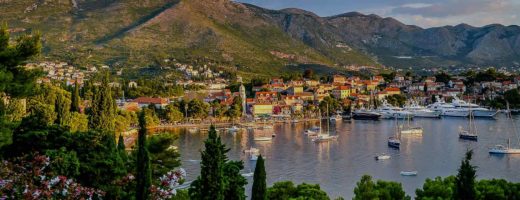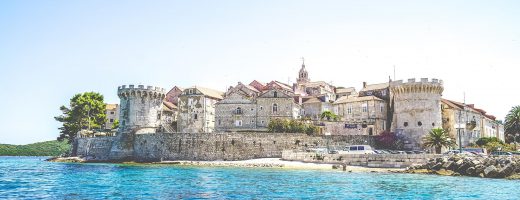Homosexual sex was legalised in 1977. The age of consent was equalised in 1998. Homosexuals are not banned from military service. There is legal recognition of same-sex couples, which allows for unregistered cohabitation since 2003. Tolerance of gay people is growing in the main cities, while the rural areas remain anti-homosexual. There exists a small gay scene around the country, that is however growing rapidly as well as the number of strong lesbian and LGBTIQ activist groups. Participants in past Zagreb Pride experienced public opposition but subsequent events in the city have occurred with stronger police protection, and have been free of such incidents.

Croatia, Zadar
Zadar is an ancient city, built in the center of the Croatian Adriatic, full of historical and cultural monuments. It is three thousand years old, a city with a tumultuous and dynamic history. It has been destroyed, looted, devastated by succeeding civilizations, however, each time emerging stronger, richer and more beautiful. Zadar appeared for the
Croatia, City of Split
Split, on the Adriatic shoreline of Croatia, is centered around the ancient Roman Palace of the 3-4th century Emperor Diocletian fronting on the bay and city port. The population is about 178,000 and a metropolitan area numbering up to 350,000. It is the largest Dalmatian city and the second-largest city of Croatia. Modern life continues
Croatia, Dubrovnik City
Dubrovnik is a major Croatian seaport city on the Adriatic Sea coast of Croatia and one of the most attractive tourist destinations on the sea. Its total permanent population is about 43,000, with several thousand visitors arriving every day. In 1979, the city was appointed to the UNESCO list of World Heritage Sites. It is
Croatia – Zagreb: City (1)
Zagreb is the capital and the largest city of Croatia. The city is the cultural, scientific, economic and governmental center of the Republic. The city’s population in 2006 was about 784,900. In 1991, it became the capital of the country following secession from Yugoslavia. During the 1991-1995 Croatian War of Independence, it was a scene
Croatia – Zagreb: City (2)
Zagreb is the capital and the largest city of Croatia. The city is the cultural, scientific, economic and governmental center of the Republic. The city’s population in 2006 was about 784,900. In 1991, it became the capital of the country following secession from Yugoslavia. During the 1991-1995 Croatian War of Independence, it was a scene
Croatia – Zagreb: City (3)
Zagreb is the capital and the largest city of Croatia. The city is the cultural, scientific, economic and governmental center of the Republic. The city’s population in 2006 was about 784,900. In 1991, it became the capital of the country following secession from Yugoslavia. During the 1991-1995 Croatian War of Independence, it was a scene
Croatia – Adriatic Islands
The Croatian Dalmation coast with its thousand islands is a very picturesque and appealing corner of Europe. It has drawn tourists for thousands of years and a drive along the coast and across some of the islands immediately reveals why. Good ferry service connects most of the larger islands. The largest island is Cres –
Croatia – Istria Peninsula
The Istrian peninsula, part of the scenic Dalmatian Coast, has been settled for hundreds of thousands of years and has seen empires come and go. Beautiful vistas, rocky shores, fertile farms and a magnificent intact Roman amphitheatre in Pula attacts visitors worldwide. Pula is the largest city in Istria County, Croatia, situated at the southern
Croatia – Plitvice Lake
In Plitvice Lakes Park sixteen lakes at descending elevations tumble into one another via countless waterfalls creating a scenic wonder.A wooden nature trail follows the course of the lakes.The sixteen lakes are separated into an upper and lower cluster formed by runoff from the mountains, descending from an altitude of 636 m to 503 m
Croatia – Bosnia (Bihac City)
Bosnia is not far from any border crossing with Croatia. This one, near the Plitvice Lakes Park, led to a short visit to the Bosnian provincial capitol of Bihac. It’s a university city with many students and a somewhat lively downtown. But the feeling of recovery is still present especially with many bullet holes in
Croatia – Central Highlands
The rugged highlands contain Croatia’s wartime ghosts. During the Balkan Wars in the 1990’sCroats, Muslim Bosnians and Serbs attacked one another in a bizarre checkboard holocaust as the federation of Yugoslavia fell bloodily apart. In Croatia, the so-called Croatian War of Independence was first waged between Croatian police forces and the Serbs living in the


